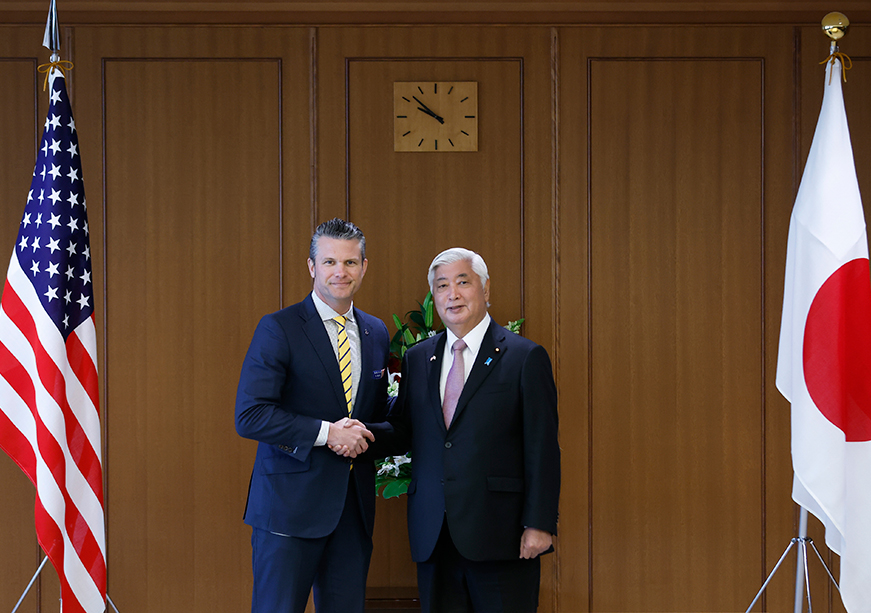
Image Source: Getty
The attack by Hamas against Israel on 7 October 2023 once again brought to the forefront the perils of terrorism and a demand to keep countering terrorism as a central theme of international security. While Hamas came under the spotlight and arguably even benefited from a globally divided view of the Israel versus Gaza narrative, other terror groups are looking to capitalise on the current political fracas in the Middle East.
A potential revival of the Islamic State (also known as ISIS or Daesh in Arabic) remains a core concern across not just the Middle East but most political and ideological divides underpinning the region. The 2021 ‘victory’ of the Taliban in Afghanistan is often highlighted as a blueprint example of how non-state militant actors can bury themselves deep into ideological wars that can last decades.
A return to the anti-ISIS fight?
The Islamic State juggernaut, which ran amok across Iraq and Syria between 2013 and 2019, brought the fight against terrorism back to the core of the global security narrative after the 2011 killing of al-Qaeda chief Osama Bin Laden in Pakistan. During this period, regional and international foes alike, whether it was the US and Russia or Iran and Saudi Arabia, had a common enemy to go after. Russian intervention in Syria was on the pretext of fighting the Islamic State, as Moscow became one of the first movers to target the smuggling of oil, which was in part funding Daesh’s growth. Meanwhile, the US, along with its allies, launched Operation Inherent Resolve in 2017 with the aim of “defeating” ISIS.
Russian intervention in Syria was on the pretext of fighting the Islamic State, as Moscow became one of the first movers to target the smuggling of oil, which was in part funding Daesh’s growth.
While ISIS has been diminished and degraded over the years, with consequent emirs of the group being efficiently eliminated since the killing of founder Abu Bakr Al Baghdadi in 2019 following a US Special Forces operation during the Syrian Civil War, the threat of an ISIS revival on the back of the war in Gaza remains a looming threat. Parallelly, sister-groups of the Islamic State in Africa and in the Afghanistan–Pakistan region have continued to not only make their mark but also present a danger of gaining enough traction to conduct attacks well beyond their geographical ambit. The Islamic State Khorasan (ISKP) remains one such entity, gaining prominence in a brewing conflict between the Afghan Taliban and the Pakistani state with a spillover threat into Central Asia. The Taliban in Afghanistan has maintained its line that ISKP’s core remains in Pakistan and the group has “no power” in the country, while Islamabad blames the Taliban for supporting Tehrik-e-Taliban Pakistan’s (TTP) operations against its territories.
At a recent United Nations Security Council briefing on the imminent threats to international peace by terrorists, both the US and Russia highlighted terrorism as a consistent and constant threat to international security. While the UN warned that ISIS is expected to remain resilient despite global counter-terrorism efforts, regional geopolitical fractures, big power competition, and a potentially insular America under President Donald Trump’s second term add to the complexities going forward. However, beyond these better-known complications, it is the prevailing situation in Gaza, the role of the US, and the new realities in Syria that may lead the re-shaping of these conversations today.
Counter-terror in the Middle East
The fall of Bashar al Assad’s regime in Syria after three decades in power was cautiously welcomed by Western powers. As Ahmed al Sharaa of Hay’at Tahrir al-Sham (earlier known by his nom de guerre Abu Muhammed al-Jolani) took charge in Damascus, his prior credentials with al Qaeda and Islamic State alike rankled the security discourse. In a region fraught with conflict, as Israel took on both Hamas and Hezbollah as a response to the 7 October terror attacks, normalising al Sharaa had more to do with aiding the exit of Russian and Iranian influence from the country than anything else. Furthermore, al Sharaa’s apparent acceptance of the Israeli state is also a breakaway from historical jihadist narratives against the Jewish state.
The Islamic State’s brutality has attracted more fighters to Iraq and Syria, especially when compared to the effects of its ideological mix of slick and well-constructed online propaganda campaigns.
The fear of ISIS’s resurgence is not unfounded. The war and subsequent death toll in Gaza could become a major resource for recruitment over the years, across geographies. The Islamic State’s brutality has attracted more fighters to Iraq and Syria, especially when compared to the effects of its ideological mix of slick and well-constructed online propaganda campaigns. The only other instance where such Islamist mobility has been observed was in Afghanistan during the occupation by the erstwhile Soviet Union between 1979 and 1989, as the US and Pakistan-backed mujahideen fought over a decade to push the invading Soviet forces to the other side of the Amu Darya. The long-term cost of support for the mujahideen was delivered in August 2021, when the US were pushed, politically and militarily, out of Kabul by the Taliban after a rapid collapse of the Republic and its US-trained and -backed armed forces.
Even as the US took the lead in taking on ISIS in Syria and Iraq, training the latter to conduct ground offensives to take over lost territories, ISIS continues to remain a threat to most governments in the region. Over the years, both ISIS and al Qaeda have targeted governments and monarchies across the Arab world for being ‘un-Islamic’ and too close to Western powers, despite harbouring their own sets of differences and internal rivalries. The popular revolt known as the ‘Arab Spring’, for example, was supported by extremist groups as they looked to back movements to topple long-standing power structures with an intended (but largely unsuccessful) aim of setting up ‘Islamic states’ in these capitals.
With the collapse of the Syrian government, there are divisions at play regarding the fight against ISIS. The US-led military operations are largely based on utilising air power. On the ground, US-backed Kurdish-led groups have been at the forefront of the battle against ISIS. Kurdish militias were also pivotal in providing actionable evidence for the US to conduct raids against top Islamic State hierarchies, including the emirs. The current division between HTS’s control and Kurdish-led groups, such as the Syrian Democratic Forces (SDF), also divides support, with the former gaining more backing from Türkiye while the SDF enjoys support from the US. The SDF is also responsible for the upkeep of camps such as Al Hol, which holds thousands of family members of deceased Islamic State fighters. To mitigate these divisions and soothe anxieties over ISIS finding its feet again, Ankara, along with Jordan, Iraq and the new dispensation in Syria, plan to set up a new cooperative to mount a response against ISIS ecosystems. Here, the driving ideology against ISIS is strategic but rooted in geopolitics, as Türkiye seeks to undermine the Kurdish position as the West’s premier anti-ISIS partner on the ground.
The SDF is also responsible for the upkeep of camps such as Al Hol, which holds thousands of family members of deceased Islamic State fighters.
The above is also designed to increase regional stakes in counter-terrorism operations at a time when Trump is looking for transactional returns for the security umbrellas his military provides. Despite the divisions, the ideological threat presented by ISIS cannot be taken lightly, specifically at a time when trade-offs between realpolitik and ideology need to be managed. The proverbial street may not understand this ad hoc approach, but they certainly do and can mobilise around ideological narratives. For example, even the founder of Hamas, the late Sheikh Ahmed Yassin, is a divisive figure within jihadist ecosystems. In 2018, an Islamic State mouthpiece declared Yassin as a ‘takfir’, or a non-believer, due to Hamas taking part in democratic elections and prioritising politics before Islam. Meanwhile, Yassin was considered a nobleman of Islam by Bin Laden. This not only illustrates ideological crevasses within extreme Islamist ideologies that all regional Muslim majority countries must manage but also shows how complexities encapsulate a fragile issue such as the war in Gaza and the broader Palestine question.
Conclusion
The outright destruction of an entity such as the Islamic State may not be possible, reorienting policy towards management of the problem. This requires a long-term commitment, which may be difficult for the US to sponsor in a prolonged manner. A regional approach backed by regional capacities, one that is missing till now, could force a territorial and zonal commonality on tackling these ideologies. Global counter terrorism capacities still rely strongly on the power projection by America, with the abilities of others to fill these gaps and roles being almost non-existent.
Kabir Taneja is a Deputy Director and Fellow with the Strategic Studies programme at the Observer Research Foundation.
The views expressed above belong to the author(s). ORF research and analyses now available on Telegram! Click here to access our curated content — blogs, longforms and interviews.




 PREV
PREV


